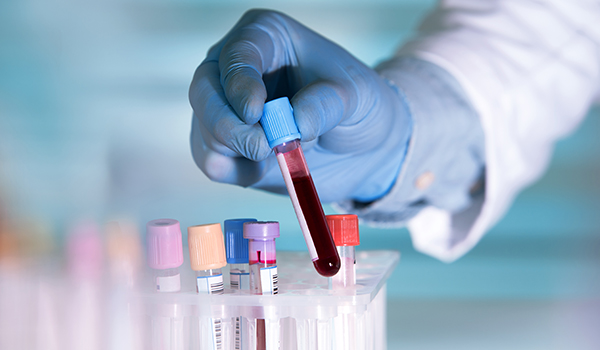Contents
Diabetes test and Lower A1C
When you have diabetes, it is in your best interest to measure your diabetes as frequently as possible. Which you can do through various tests like A1C tests. If you measure your blood sugar after meals then it gives you an idea of how the food you eat regulates and increases your blood sugar levels. In this article, we will discuss how to lower A1C levels.
You should get tested if you experience the following symptoms:
- Feel dizzy
- Tired
- Urinate more often than usual
- Have injuries that won’t heal faster
- Have blurred vision
You should definitely get your blood sugar levels. And check in with your doctor because these could be your body’s cry for attention to its dipping or spiking sugar levels.
What is A1C?
A1c is the most commonly used blood test to monitor blood sugar levels in order to screen for diabetic symptoms. The A1C test is also called the glycated haemoglobin, glycosylated haemoglobin, haemoglobin A1C test. The HbA1C test can monitor your blood sugar levels over a period of two to three months. The test is also used by healthcare professionals to find out whether or not the course of treatment they have opted for is working. And to track your progress as well as manage it.
Diabetes is usually caused due to a malfunctioning metabolism. The hormone insulin is responsible for removing sugar from the blood cells into muscles to either be stored as energy or be utilised as such. When you have diabetes your body is either unable to produce the adequate amount of insulin needed to utilize the sugar or cannot produce the required insulin at all. A1C measures the percentage of haemoglobin in the blood that has glucose attached to it which is the excess sugar present in the bloodstream.
Untreated high or low blood sugar levels, for a long period of time, can cause nerve damage, kidney failure or even total loss of vision in severe cases.
What is the A1C test used for?
A1C test is usually used to track blood sugar levels which are indicative of the following diseases:
Type 1 diabetes
Type 1 diabetes is an autoimmune disease that damages and destroys the pancreatic cells which produce insulin. The reason behind this self-sabotaging tendency of the body and why it occurs is quite unclear. type 1 diabetes usually develops in adolescents and children. 10-11% of diabetic patients have type 1 diabetes.
Symptoms of type one diabetes include:
- Frequent urination
- Bedwetting in children (that did not use to do this earlier)
- Fatigue
- Irritability
- Unintentional weight loss
Type 2 diabetes
Type 2 diabetes is caused due to persistent and continuous high blood sugar levels. which lead the sugar to accumulate in your blood. this kind of diabetes is the most common type of diabetes everywhere, and can even affect children due to childhood obesity.
Symptoms of type two diabetes include:
- Increased hunger
- Increased thirst
- Blurred Vision
- Fatigue
- Frequent urination
Gestational Diabetes
Women with gestational diabetes usually don’t have any apparent symptoms. They usually get diagnosed during a routine blood test.
If not managed properly, persistent high blood sugar levels can lead to complications during labour, and the mother might even need a c-section to deliver the baby.
Although it’s not quite clear why some women get gestational diabetes and why some don’t. The following things can increase your risk factors of getting gestational diabetes:
- Excessive weight before pregnancy
- Polycystic ovarian syndrome
- Previously delivering a baby weighing more than 9 pounds
- Certain ethnic groups are more susceptible to Gestational Diabetes (black, American Indian, Asian American, Hispanic)
- Sedentary lifestyle during pregnancy
What Does A1C Measure?
The glucose sells attach themselves to the blood cells which are how we can measure the blood sugar levels of a person. With an A1C test, even if your blood sugar levels were high earlier but are normal now, they would still leave traces that would show. So because haemoglobin cells have a life span of 3 months, an A1C test can measure your average blood sugar levels throughout the span of 2-3 months. It’s not an active representation of your blood sugar levels but it gives your doctor a holistic view.
What Do the Numbers in A1C Test Mean?
To understand what those numbers mean, first, let’s look at what Glycated Haemoglobin means.
Glycated Haemoglobin
Glycated haemoglobin is also known as Glycohaemoglobin or HbA1C. It is a form of haemoglobin that is chemically linked to sugar in the bloodstream.
When you get an A1C test, it measures the amount of glycated Haemoglobin in your blood.
Percentages of A1c
If a person has 4.9 per cent Glycated Haemoglobin then they are free of diabetes. Up to 5.6 per cent of glycated haemoglobin is considered normal. If someone has 7 per cent glycated haemoglobin then they are diabetic. American Diabetes Association has regulated that the A1C directly relates to the amount of glucose present in someone’s bloodstream.
More and more frequent monitoring should be done with the help of these A1C tests. These tests not only help with diagnosis, but they also help your doctor and dietician provide you with a sustainable treatment and diet plan.
What can affect your test results?
There are many factors that can falsely fluctuate your A1C test result, some of these factors are:
Kidney Failure
Studies have shown that while monitoring the blood sugar levels through an A1C test, a few complications can arise. If a person with diabetes along with Chronic Kidney diseases like End-Stage Renal Disease gets their A1C tested then their levels are likely to fluctuate.
Haemoglobin Variants
According to studies haemoglobin A1C test can be unreliable in people who have inherited variants of haemoglobin, also called Haemoglobinopathies. These variants are usually found more prevalent in specific ethnicities like the Mediterranean, Southeast Asian and African.
Medications

Sometimes we take medications without realizing the negative effects they can have on your body. This is why it becomes even more essential to make your doctor fully aware of your underlying health conditions before they prescribe you any medication. For example steroids, antipsychotics and birth control pills can cause your A1C test results to rise up.
What if You Don’t Have Lower A1C Levels?
If your doctor recommends you have an HbA1c test, and the results show that your A1C levels are high then that’s bad news but you don’t need to panic. The higher your A1C levels are, the poorer your blood sugar level control is. This means you have more chances of encountering complications like diabetes.
How to Lower A1C?
Since it’s impossible to reverse it overnight, the journey towards lowering your A1C levels should be slow, easy, practical, and consistent. This can be done through steps that can make a remarkable difference in your life.
Setting Your Goal
The first step involves helping you understand blood sugar levels and the root causes inside out. You should sit with your doctor and they will provide you with an in-depth analysis of such high levels of and what’s causing it. After all, it’s important for you to know what landed you in such a condition.
Assessing Current Health
Second, you understand your current health condition, based on your inputs on height, weight, age, gender, blood pressure levels, and sugar levels. And then use this to establish a starting point and set target goals for you to achieve. In this step, you should find out whether you are overweight based on your BMI, and calculate your calorie requirement based on your BMI.
Tracking Diet and Making Changes
The third step and most important step involves tracking your current diet and its impact on your metabolism. Every person’s metabolism is different. And so is its response to different food items. With the use of technology and analytics, you should track your glucose, ketones, weight, blood pressure, carbohydrates, body fats, and 50+ other parameters…
Based on this analysis your doctor will proactively suggest positive changes in your diet. Basically, the food that your body likes can also be the food that doesn’t lead to a spike in your sugar levels if chosen wisely. This is one of the ways to lower A1C levels. You might even want to design and regularly update the right diet plans for yourself, but don’t forget to take care of your cravings as well, otherwise, you might end up binging.
Coming on to the fourth step, based on your comfort. before exercising ask your doctor they will suggest the exercises that suit your body, health requirements and your age. Exercise is a sure short method to bring down your blood sugar levels and as a result, also lower A1C levels. Exercise not only reduces your blood sugar, but also helps replace your current and sedentary lifestyle with a new, active, and healthy one.
Changing Lifestyle
Over the course of time, your blood sugar levels should improve, since you’re also tracking your other lifestyle habits. For example, track your water intake so as to know how much water is able to flush the excess glucose off your body. These little changes will help you achieve lower A1C levels.
Managing Stress
Stress is one of the biggest reasons for high blood sugar levels and is also the one that people take least seriously. While everyone is drowning in stress these days, it has become important to keep track of your mental health as well.
Try practising mindfulness through various methods like yoga, meditation. Working on creative hobbies that help calm you down and putting your mind at ease like reading, painting, playing music or anything else. This rejuvenation will help you lower A1C levels.
Fighting Related Conditions
Once you are able to bring down the blood sugar levels. Your doctor will help you manage related chronic conditions such as BP, cholesterol and obesity.
Regenerating beta cells
Lastly, you should work towards the regeneration of beta cells in your body. Beta cells help make insulin in the pancreas which eventually facilitates glucose/sugar metabolism. Through this, you will be able to lower A1C levels.
Finding Your Community
The most invasive and drastic method to improve your blood sugar levels and produce lower A1C test results could be weight loss. But what matters the most is the support you get during your journey towards weight loss and consequent lowering of blood sugar levels.
Finding people who are going through the same things as you can help you gain a sense of community. Because human beings are social animals and at the end of the day people need people. Finding your group might help boost the morale and lead to the holistic development of all of you apart from getting healthier.
Although achieving lower A1C levels can be hard and might prove even more challenging if you are a diabetes patient. But it’s important to realize and work on it before it’s too late and you’ve reached an irreversible state of diabetes or something even more chronic.
A Word From MantraCare
Do you want to get rid of diabetes? Join our online diabetes consultation program and reverse your Diabetes naturally through lifestyle changes such as a Personalized Diet plan, Exercise, dieticians, and health coaches.




